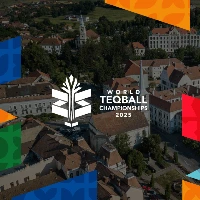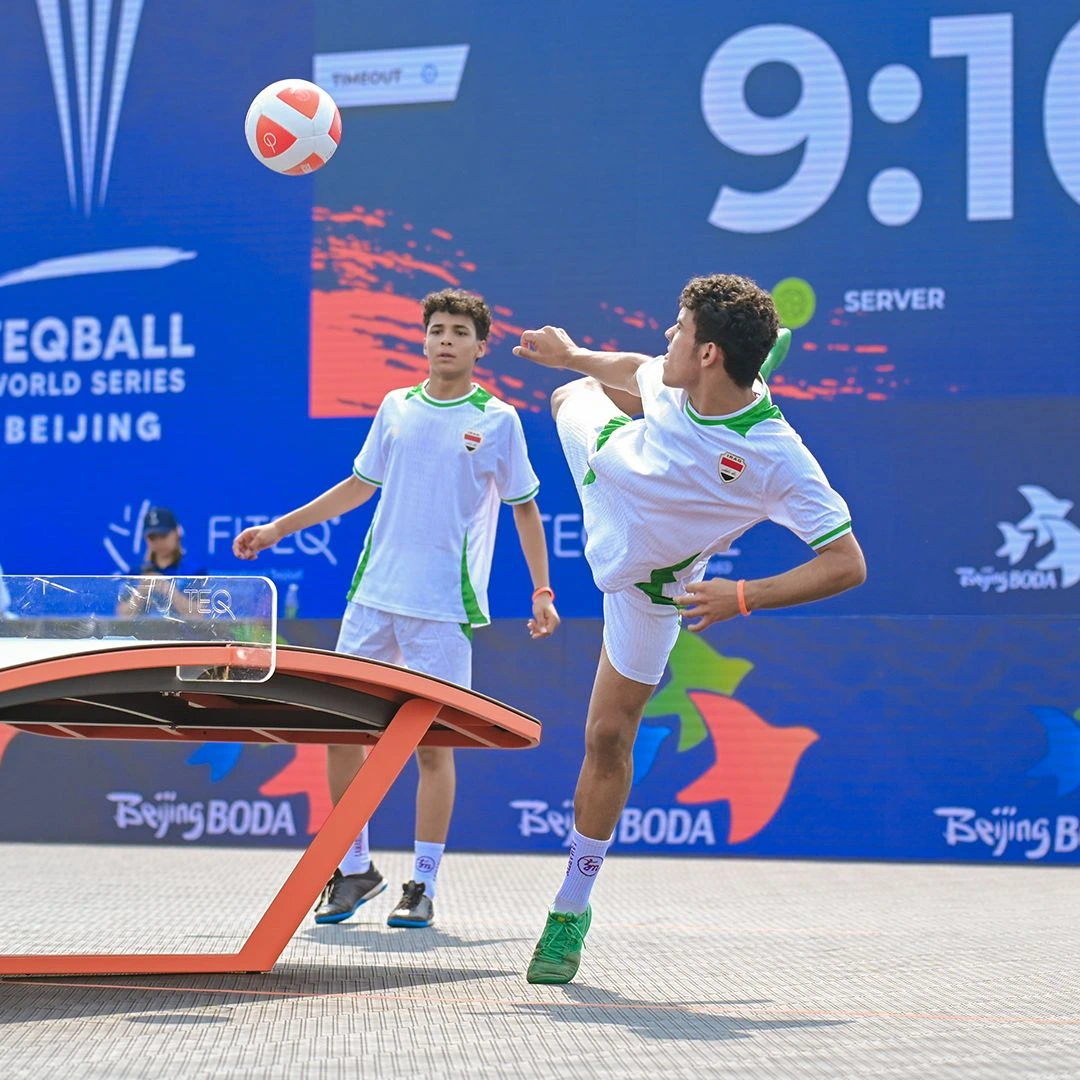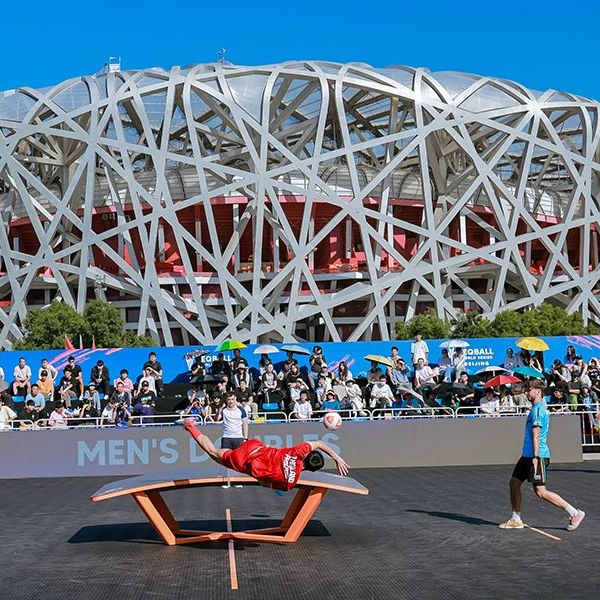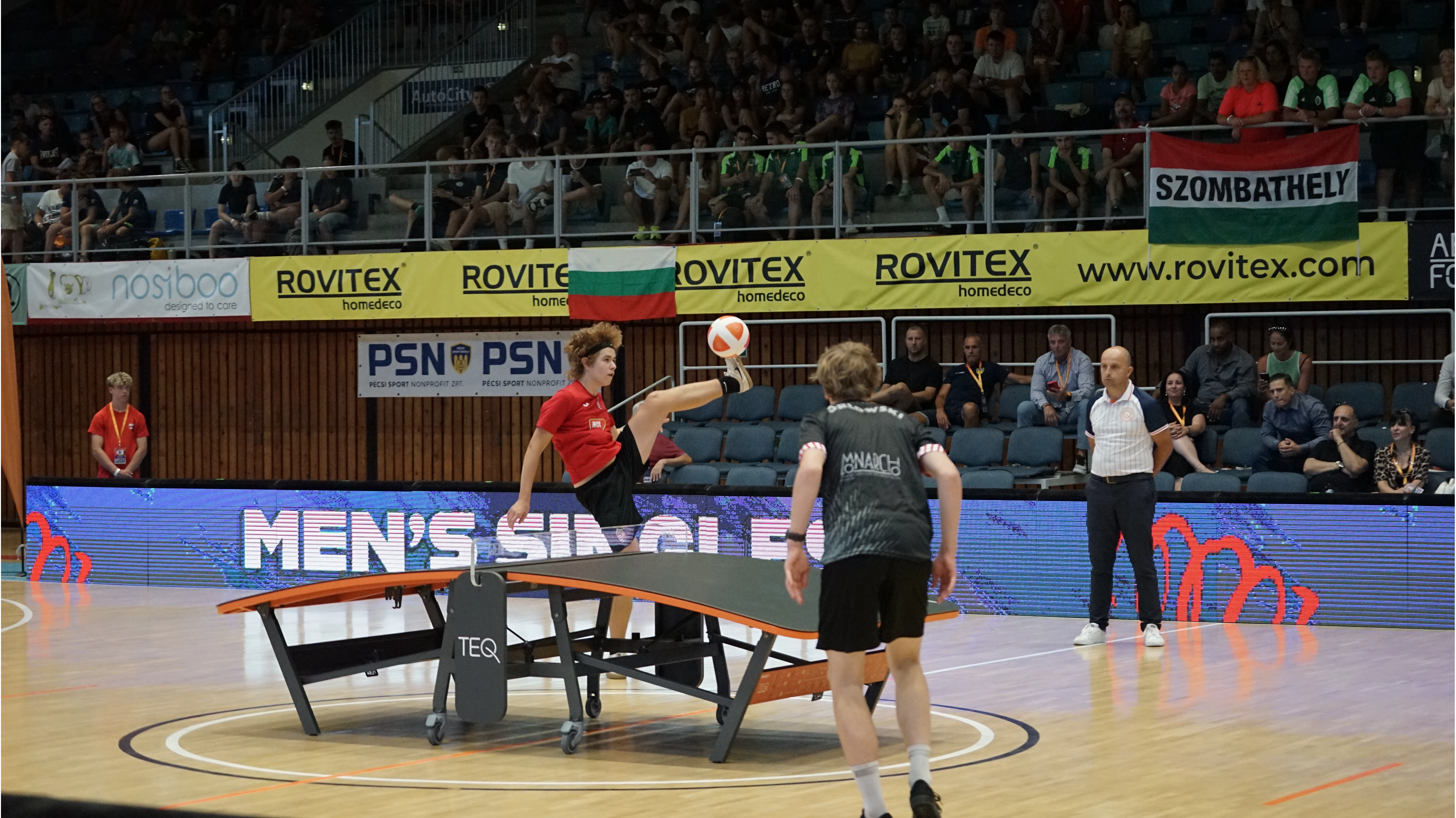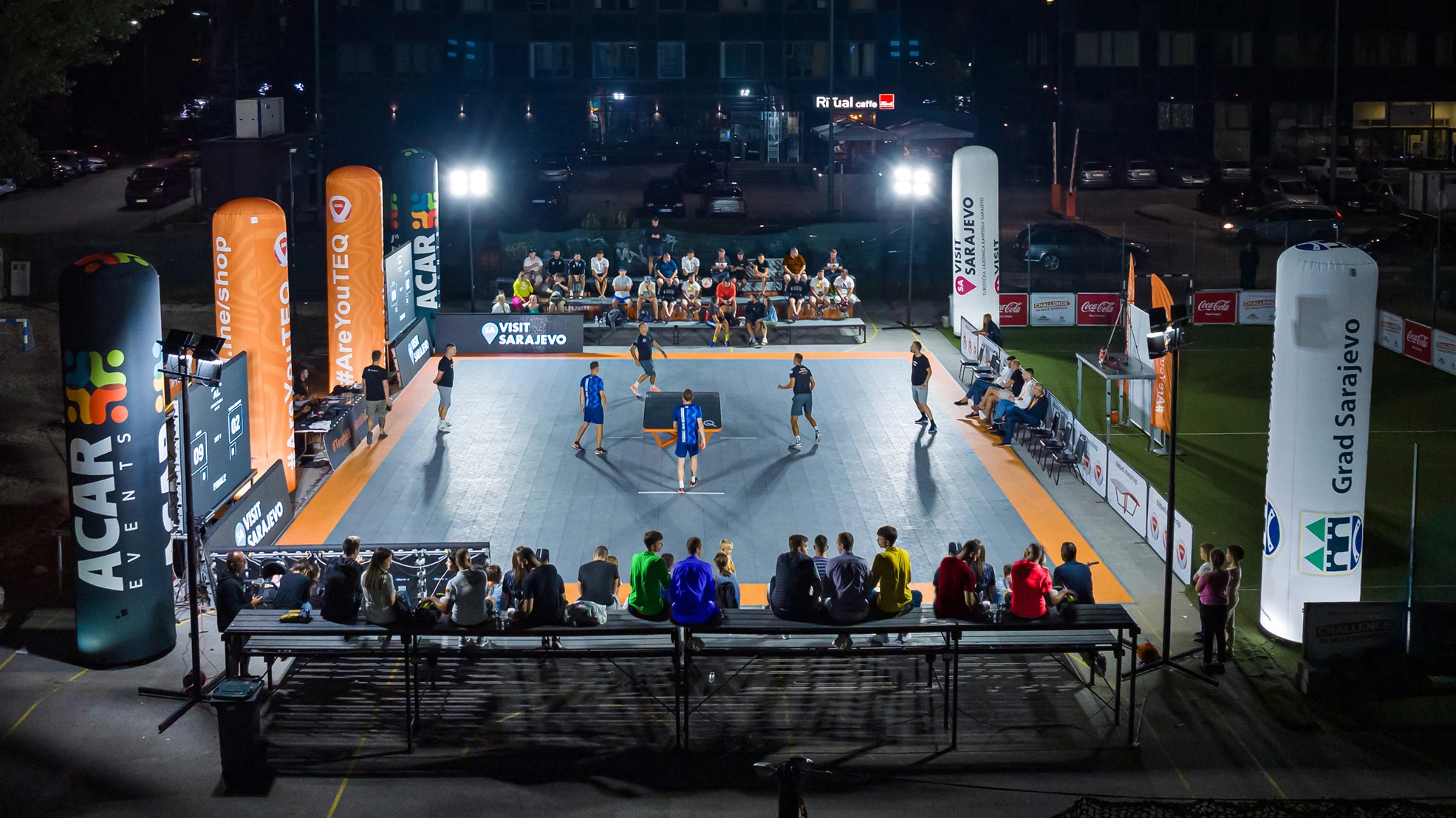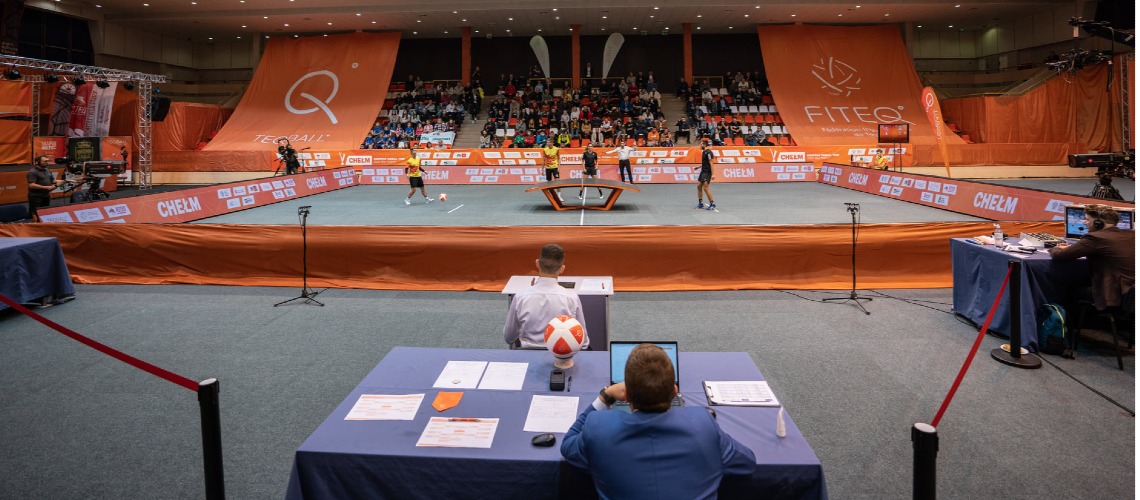
Tactical Analysis: Men’s doubles final of the European Teqball Tour – Bem Jozef Chelm Trophy
Preamble
After the first stage of the European Teqball Tour on the sandy beaches of Cervia, Italy, the show continued in Chelm, Poland with many of the world’s best teqball players competing. There were 50 athletes registered for the competition, with 4 continents represented in the men’s doubles and mixed doubles.
The pre-tournament favourites to reach the men’s doubles final were the Hungarian duo of Adam Blazsovics and Csaba Banyik, and the Serbian team of Bogdan Marojevic and Nikola Mitro, who took home the men’s doubles trophy from Cervia after a tightly-contested match against their Hungarian rivals.
Both teams qualified for the semi-finals, where the Hungarians faced Hugo Rabeux and Julien Grondin from France. Despite being underdogs, the French team won the first set with some brilliant defensive play from Hugo Rabeux and amazing attacking finesse from Julien Grondin. In the second set, Hungary returned to their usual attacking consistency, with the French side unable to keep up the level they demonstrated in the first set. The Hungarian team then won the third set despite looking beatable during the match.
In the other semi-final, Marojevic and Mitro confidently beat the newly formed Hungarian pair of Adam Bako and Barna Kovacsfi. This dominant performance led many to believe the Serbians may secure their consecutive European Tour title.
After the Serbians won the European Teqball Tour trophy in Cervia, they met Blazsovics and Banyik in the semi-finals of the Budapest Teqball Cup, with the Hungarians emerging victorious on an indoor surface
With the Chelm final looming, the teqball world was wondering whether it was going to be consecutive European Teqball Tour wins for Marojevic and Mitro, or whether the Hungarians could capitalise on the fact that the final is on their preferred indoor surface, coupled with the momentum from their win in Budapest.
In this article, Barnabas Nemeth, the Coach Education Manager of FITEQ gives us a tactical insight into the final game of the men’s doubles competition, which resulted in a 2-1 (12-7, 7-12, 12-4) win for the Serbians. Nemeth looks at what went wrong for the Hungarians and explains the Serbian team’s match plan to overcome the reigning World Champions.
The Match Plans of the teams:
|
|
Blazsovics-Banyik |
Marojevic-Mitro |
|
Teqball Style of Play |
Teq Style – with dominant elements of inside the foot smashes (1), upper leg preparation touches (2), and harvesters (3) |
Sniper Style – with dominant elements of snipes (strong, well-aimed headers) (1), 1-1-1 playing combinations (2), defending and preparing with headers (3)
What is new to their style: using inside the foot smashes (from Marojevic) with a 2-1 combination with Mitro preparing |
|
Dominant Attack |
1) Inside the foot smashes from Banyik (right foot) 2) Banyik serves – smash with the foot |
Snipes from Marojevic |
|
Secondary Attack |
1) Headers from Blazsovics 2) Left foot smashes from Blazsovics (when Banyik is receiving and there is a second (safer) service) |
1) Inside the foot smashes from Marojevic 2) Headers from Mitro |
|
Dominant Defending |
Blazsovics behind the table, taking preferably one touch to Banyik |
1) Mitro defending against the smashes of Banyik – passing it instantly to Marojevic 2) Marojevic receiving whenever possible against any other attacks (safety returns, right-hand side Blazsovics returns, etc.) and playing a 1-1-1 combination with Mitro from that |
Match plan of the Blazsovics-Banyik team:
- Their preferred situation is when Blazsovics receives the ball and passes it to Banyik with one touch. Then, Banyik prepares the ball with his upper leg to smash it – so a 1-2 combination would be played. Sometimes they changed it to a 2-1 combination with Blazsovics preparing the ball with his chest.
- Against stronger attacks going further from the table, Adam Blazsovics would receive the ball with the foot and then prepare it for a smash for Banyik himself – so a 2-1 combination would be played most of the times.
Figure 1: Blazsovics further away from the table, taking two touches on the ball and then passes it for Banyik for a smash
- In case the Hungarians cannot use their right foot to return the ball (due to the Repeated Return rule in teqball), they would try to play a 1-1-1 with Blazsovics receiving, passing it to Banyik, and then getting it back on the right-hand side of the table. From there, he would head the ball strongly on the table.
- In cases of a second service for the Serbian team, if Banyik was receiving, Blazsovics would come to the right-hand side of the table and Banyik would prepare a smash for him with two touches – using a 2-1 combination, but with Blazsovics attacking with his left foot, smashing the ball.
Figure 2: Blazsovics comes to the right hand side of Banyik for the second (safer) service of the Serbian team.
- They would build on Banyik’s strong serving smashes to win points.
Match plan of the Marojevic-Mitro team:
- The best option for the Serbian team is when Marojevic can receive the ball. He would then pass it to Mitro (going over the halfway line for a better preparation angle) who would pass it back (with the chest or head) right above the plexi where Marojevic can perform a snipe or a tricky harvester depending on the position of their opponents
This individual tactic has been mastered by Marojevic – he can easily fake the strong header, sending the defender away from the table and then cleverly hit a harvester (shortening). This situation also requires precise work from Mitro.
Figure 3: Marojevic received the ball after a Hungarian return, then Mitro took his own position on the other side of the table. Then, they played a 1-1-1 combination to create the header opportunity for Marojevic from above the plexi.
- The Serbian side had to consider that the Hungarians will try to keep smashing the ball. Against this tactic, Mitro was constantly defending using his footwork and excellent coordination. He never took two touches on the ball after a Banyik smash, he always directed the ball towards Marojevic – mostly with his head so they could gain time and preserve an extra touch.
From this defensive style, they often tried to counter-attack with a strong Mitro header.
Figure 4: Mitro is preparing for a Banyik smash. After smashes, he would try and play the ball with the head immediately to Marojevic for another 1-1-1 combination to safely return the ball and defend the smash.
- As the Serbians’ headers are almost as strong as smashes, they still have the opportunity to perform a smash as a secondary attack. Recently, Marojevic has been working on these smashes with Mitro preparing the ball for him with, mostly, a 2-1 combination (Sometimes with the same 1-1-1 combination as above).
Figure 5: Mitro taking two touches after a weaker return from the Hungarian team. Then, he passes it to Marojevic who smashes the ball with the inside of the foot.
Key Statistics
In this match, we should take a look at some of the statistics:
- Banyik smashed the ball 24 times during the match (excluding services)
- Out of these 24 smashes, only 4 resulted in a Winner, 6 resulted in a Forced Error, 3 were outs and 11 were returned by the Serbian team
- Banyik scored 6 points in the second set – meaning that almost half of his points were won in the second set, which they secured
- All 11 returns after the smashes of Banyik were defended by Mitro
- Marojevic scored 7 points following snipes
- Marojevic scored 7 points using a smash (one was an intentional shortening smash)
We must therefore highlight the efficiency of Mitro in defence. We should also take a look at the types of the points scored throughout the match:
|
|
1st set |
2nd set |
3rd set |
Total Points |
|
Banyik wins the point |
3 |
6 |
4 |
13 |
|
Blazsovics wins the point |
1 |
2 |
0 |
3 |
|
Mitro wins the point |
1 |
1 |
3 |
5 |
|
Marojevic wins the point |
6 |
5 |
3 |
14 |
|
Unforced errors made |
HUN: 5 SRB: 3 |
HUN: 1 SRB: 4 |
HUN: 6 SRB: 0 |
HUN: 12 SRB: 7 |
|
Set final score |
HUN 7 – 12 SRB |
HUN 12 – 7 SRB |
HUN 4 – 12 SRB |
HUN 23 – 31 SRB |
Tactical Summary
- Hungary’s dominant attacking tactic was the smash from Banyik. From the statistics, we can see that he scored 13 points altogether (10 of these are smashes) which is the second best of the match (behind Marojevic with 14 pts). The individual defending brilliance from Mitro, saw him save 11 smashes from being a winning point, which is almost every second smash. This can be considered a world-class performance from Mitro.
- Hungary’s secondary attacks were as follows:
- Headers from Blazsovics from the right side of the table (after a 1-1-1 combination with Banyik)
- Left foot smashes after the Serbian second service is received by Banyik.
This meant Blazsovics was the secondary attacking option for Hungary, and he only scored 3 points throughout the match. Moreover, the Serbian side scored 10 points during the match after a return made from Blazsovics (this includes 3 service returns), so the Hungarian secondary attack did not work effectively.
The reason behind this is that when the Hungarian team returned the ball with a secondary attack, and Marojevic was receiving, the Serbians could counter-attack from this situation with a 1-1-1 combination which is their preferred style. If the Serbians were not able to use their head to return the ball in this situation, then it was Mitro who received, and they did a 2-1 combination with Marojevic smashing the ball.
This led to Marojevic scoring altogether 14 points in this match.
- On the other hand, Serbia used Mitro’s headers and inside of the foot smashes from Marojevic as a secondary attacking option. They scored 12 points from these types of attacks, so it seemed to be working very efficiently.
- Hungary gave up 6 Unforced Errors in the final set, while Serbia did not lose any points after an Unforced Error in the same set. This is reflective of the impressive mental strength and concentration level of the Serbian players in the match.
Conclusions
- The Serbian team played at their best in attack combined with wonderful defensive play against the Banyik smashes. Against this style of play, the opponents may have had more success by using another type of secondary attack – one which is stronger and cannot be returned regularly.
- Preferably, this would be a strong attack that is received by Mitro. This is because he would be far away from the table, so either he would need to take two touches to make Marojevic return the ball (which is uncomfortable for Mitro as he’s not used to it) or, only Mitro can finish the attack which would not have been as effective as Marojevic’s headers during this game.
- Receiving with two touches from a distance from the table might not be the best solution to return the ball strongly after a smash or a snipe. The 1-1-1 combination of the Serbians seemed to be working better than the 2-1 combination of the Hungarians after powerful attacks.
- For this, receiving (and immediately passing with a first touch) with the header pass might be more efficient.
- The final set is also a mind game. Giving up 6 Unforced Errors made it very difficult for the Hungarian team to win, and gave the Serbians a significant boost.
Subscribe to our Newsletter HERE for more interesting insights and contents





